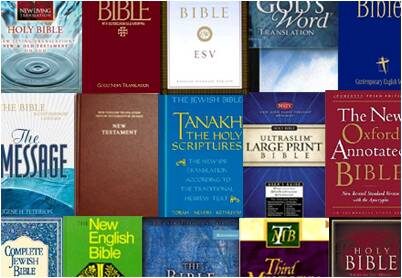Extra-Biblical / Non-Biblical:
But what if the works of the church fathers were destroyed? What could we learn about Jesus and about Christians from sources outside of the Bible and outside the writings of the church fathers? (note that in what follows I am not even referencing history and archaeology affirming the Old Testament and much more that affirms the New Testament)
We could learn a number of claims regarding Jesus:
A person named Jesus (Yeshu, Yeshuah, etc.) existed. Jesus was from Nazareth. He had a brother name James. He was called a wise man. He was a teacher. He introduced new teaching contrary to Judaism. His teachings spread rapidly. He lived a virtuous life. He was followed by Jews and Greeks. He had the ability to prophecy. He was known to be worshipped as a God. He was regarded as the Son of God. He was referred to as the savior.
He was called Christ (Kristos, etc.).
He worked miracles. He was crucified during the reign of Tiberius in the Procuratorship of Pontius Pilate. Darkness and earthquake at the time of His death.
He was said to have resurrected on the third day.
Consider also that the various apocryphal/Gnostic gospels also confirm various New Testament doctrines and claims about Jesus. Let us consider one example; The Gospel of Judas affirms that Jesus existed, that He had apostles, that He preformed miraculous works, the He came as savior of humanity, that He had the ability to prophecy, that He was exalted as the son of our god, that He came from an eternal realm, that there is an afterlife, and that Judas received some money.

We could learn a number of claims regarding Christians:
They met together to sing hymns to Christ as to a God and encourage each other to moral behavior. They also met in order to partake of food—but food of an ordinary and innocent kind. They considered themselves brothers, followers of Jesus’ laws, and shared worldly goods as common property. They had deaconesses. They had contempt for death. They believed they were immortal. They refused to worship other gods, including worshipping Caesar’s idol, even threatened with death. They were falsely accused of various offenses. They endured persecution, mockery and torture of every sort, particularly under Nero. They had such an impact that pagan temples had been almost deserted, and the sacred festivals and sacrificial meat had lost much popularity.
They healed in Jesus’ name (referred to as Jeshua ben Pantera).
They spread rapidly.
They enounced material goods
This is to name a few that have been gleaned from Phlegon, Julius Africanus, Philopon, Thallus, Pliny the Younger aka Plinius Secundus, Emperor Trajan, Lucian of Samosata, Gaius Suetonius Tranquillas, Emporer Hadrian, Eusebius, Celsus, Flavius Josephus, Cornelius Tacitus, The Talmud, Tosefta Hullin, Mara Bar Serapion and as collected by F. F. Bruce in Jesus and Christian Origins Outside the New Testament and Gary Habermas in The Historical Jesus Ancient Evidence for the Life of Christ.
Please consider one very important fact that we ought to keep in mind when establishing what sort of early documentation we ought to expect from the New Testament: Jerusalem was sacked by the Romans in 70 AD. This devastating attack included the dismantling of the Temple stone by stone. We should carefully consider whether it is fair to expect a devastated city to preserve pristine documents for posterity. Can we really expect to have much of anything preserved? Can we really expect documents of any sort to survive the sacking of a city? Let us be patient and accept what we do have from as early on as we do have it.
When we consider that to this very date not only has the Temple not been rebuilt but that we do not even know the exact layout, it certainly does seem much too much to ask for a piece of papyrus or parchment from the heart of pre-70 AD Jerusalem to survive. Moreover, in 303 AD the Roman Emperor Diocletian sought to destroy the Christian scriptures. This means that there was such a thing as Christian scriptures, that they could be sought and found (i.e. they were recognizable). This also means that some manuscripts were lost.
Thus, there are various ways in which we could reconstruct the Bible and the fact that the Bible has not been destroyed means that each of these, and more, sources provide us with an astonishingly reliable document the likes of which the ancient world has never known and could never hope to match.
~~~~~~~~~~~~~~~~~~~~~~~~
A plea: I have to pay for server usage and have made all content on this website free and always will. I support my family on one income and do research, writing, videos, etc. as a hobby. If you can even spare $1.00 as a donation, please do so: it may not seem like much but if each person reading this would do so, even every now and then, it would add up and really, really help. Here is my donate/paypal page.
Due to robo-spaming, I had to close the comment sections. However, you can comment on my Facebook page and/or on my Google+ page. You can also use the “Share / Save” button below this post.
‹ The Destroyed Bible – On How to Reconstruct the Bible, part 3 up
